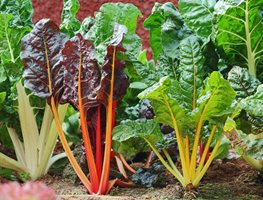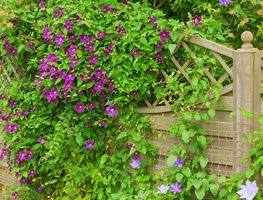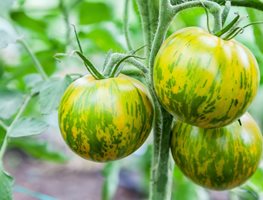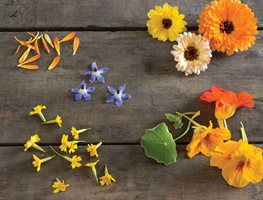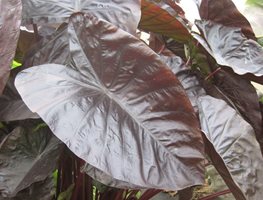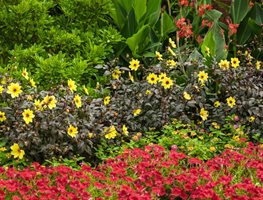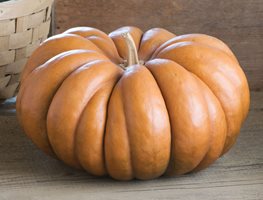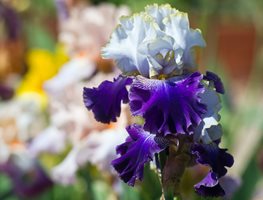June Gardening Checklist for Los Angeles
Spring isn’t officially over, but at this time of year in Los Angeles, warm weather has typically set in and gardens have jumped into high gear. There are lots of plants you can still get into the ground including edibles, tropicals, plants for late-summer and fall color, and much more. You can also take care of a few maintenance tasks to keep flowers on track for bountiful blooms. It’s time to get out into your garden and have some fun.
1. Plant Those Last Crops Now
There’s still time to plant those crops you haven’t had the chance to get into the ground yet. Often, plants that are planted in June catch up to those planted earlier because they get a burst of extra heat early in their growth cycle. Plant starts of cucumbers, peppers, tomatoes, and squash. Plant seeds of beets, carrots, corn, lima or snap peas, pumpkins, sweet potatoes, and swiss chard. You can also plant heat-resistant lettuces or mesclun in those gaps between smaller crops. Be sure to water consistently. Here are a few great sources for seeds or starts: Johnny's Selected Seed, Burpee, Renee's Garden, or Botanical Interests.
2. Get Creative with Your Garden Space
Whether you’re growing a vegetable garden or sticking to ornamentals, using your growing space wisely is important. We all like more food or flowers, right? Think of spaces in your garden where you can grow vertically—perhaps by using an arbor or by installing a trellis along a fence. Tomatoes, beans, and even cucumbers and squash can be grown vertically. Flowering vines are also a wonderful use of vertical space. Try large-flowered vines such as clematis, cup-and-saucer vine, passion flowers, climbing roses (such as David Austin varieties), snail flowers, climbing hydrangea, or wisteria. Even on flat land a few crops are generally more productive: carrots, cucumbers, onions, potatoes, summer squash, and tomatoes.
3. Keep Your Tomatoes Producing
Fruit production is often best when you help the pollination process along. You can gently flick tomato blossoms to disperse pollen (make sure they’re dry when you do this). You can also give the entire plant a shake to spread the sticky tomato pollen. Be sure to plant flowers such as zinnias and marigolds in and around your tomatoes beds to bring in the pollinators, too. Once fruits are producing, harvest on a regular basis to keep flower production active. Drench your tomato plants with compost tea a few times this month (we recommend Bu's Best Biodynamic Tomato Tea). For ease of use, put the liquid tea into a pump sprayer and give the foliage a soak. This helps strengthen the plant and rid it of many diseases.
4. Take Care of Your Herbs
If your herbs are getting large, pinch off flower spikes to keep the plant growing in a bushy, foliage-heavy manner. You want the plants putting energy into leaf production (the tasty part with all the flavor) not into flower and seed production. Alternatively, seek out newer varieties like Amazel Basil™ that are sterile (do not produce seed) and give you a higher yield of leaves. You can also plant more herbs this month. They often love the heat. Try some off-beat varities such as Thai basil, red perilla (Shiso), lovage, lemongrass, bronze fennel, or ginger.
5. Plant Edible Flowers
Edible flowers are all the rage in restaurants. You may have even grown edible flowers yourself and not even realized it. Common garden plants such as nasturtium and borage have edible flowers. So do many other garden plants such as bachelor buttons, roses, chives, cosmos, zucchini, and dianthus. For interesting-tasting flowers grow bee balm, mums, carnations, hibiscus, nasturtium, and violets. Just like you would for any food garden, be sure you are growing organically without the use of any chemicals or pesticides anywhere on your property. If you’re pregnant of breastfeeding be sure to do further research about ingesting edible flowers.
Don't miss out on what to do next month! Make sure you're signed up for our weekly newsletter.
6. Plant Tropicals
Throughout Los Angeles, tropicals can be grown without much hassle. Many people on the east coast and in northern climates go through a lot of trouble growing them in containers, moving them indoors during the winter, and moving them back out each spring. But here, tropicals can be enjoyed in the garden year-round. June is a great time to plant hibiscus, succulents, cannas, palms, cycads, and elephant's ear. For unique hibiscus varieties check out Hidden Valley Hibiscus or Hibiscus Lady Nursery. For succulents, palms, and other tropicals take a look at Plants Express; they have a nice selection for Southern California and deliver larger plants (1-gallon, 5-gallon, 15-gallon, 24-inch boxes). Proven Winners also has great varieties of hibiscus and cannas.
7. Make Sure Dahlias Get Good Care
Dahlias are one of the most prized summer flowers popularized more recently by Floret flower farm through their Instagram feed and books. Swan Island Dahlias has helped too with their annual dahlia festival (held in August) and their dahlia catalog. At this time of year it's important to keep your dahlias well-fed, well-watered, and free of pests. Typically, you don't water tubers when planted because it can cause rot but by now foliage has emerged so watering should take place two to three times per week (more in hot weather). Fertilize with a low nitrogen fertilizer (5-10-10) every month. Compost can help too but don't over fertilize or you'll get lots of foliage and not many flowers. Slugs and snails are the biggest dahlia pests. Be sure you have bait set out when you plant. If you haven't baited by now do so immediately. One other piece of advice: pinch the center tip of dahlias when they are around 2 feet tall. This will promote side shoots and more flowers per plant. If you want to add dahlias to your garden the first half of June is likely the last time to get them in the ground. Look for grown plants at gardens centers (it's too late to plant tubers).
8. Plant Bulbs, Corms, and Tubers for Summer and Fall Blooms
Now is the time to plant begonias, cannas, gladiolus, crocosmias (montbretia), and tigridias (tiger flower). It’s best to plant these in late spring and early summer to get gorgeous flowers throughout summer and into fall. To get your hands on quality bulbs, visit Easy to Grow Bulbs or Longfield Gardens to order online. Learn more about how to plant bulbs.
9. Plant Your Pumpkins
We’re just getting into summer but it’s smart to think about fall now. With a little planning, you can have pumpkins growing right in your own backyard in just a few months. If you want to grow the Jack-O-Lantern varieties for carving, one or two plants will probably be enough-that will give you plenty pumpkins for your family, and the neighbors, to carve. We suggest growing other interesting varieties of pumpkins that will be delicious in pies or make great decorations. For pies, grow ‘Cinnamon Girl’, ‘New England Pie’, or ‘Winter Luxury’. For interesting seasonal decoration, grow the white ‘Polar Bear’, gray-green and textured ‘Marina Di Chioggia’, orange ‘Musque de Provence’ (pictured), yellow and orange ‘Blaze’, bumpy ‘Knuckle Head’, or mushroom-shaped ‘Turk’s Turban’. All these varieties and more are available at Johnny's Selected Seed.
10. Plan For & Buy Bearded Iris
Since you still have a bit of time before it’s time to plant bearded irises, now’s the time to order the ones you want—keep in mind that many of the popular varieties sell out by late summer. Schreiner's Iris Gardens has a wonderful selection: from tall bearded iris to dwarf bearded iris. When thinking about placing bearded iris in your garden, pick a location where they will get at least 6 hours of direct sunlight per day. Well-draining soil is also important as they will rot if there’s constant water around their rhizomes. Bearded irises also do best with a low-nitrogen fertilizer.
If you enjoyed this information, sign up for our weekly newsletter. Each week, you'll get Garden Design's best delivered right to your inbox including design tips, plant picks, great gardens, outdoor living products, and events to enjoy — along with monthly gardening checklists just for your area.
Do you know someone who would enjoy this Los Angeles area gardening information? Why not share it with them?
When you purchase products through links on our site, we may receive an affiliate commission. Thank you for your support.
